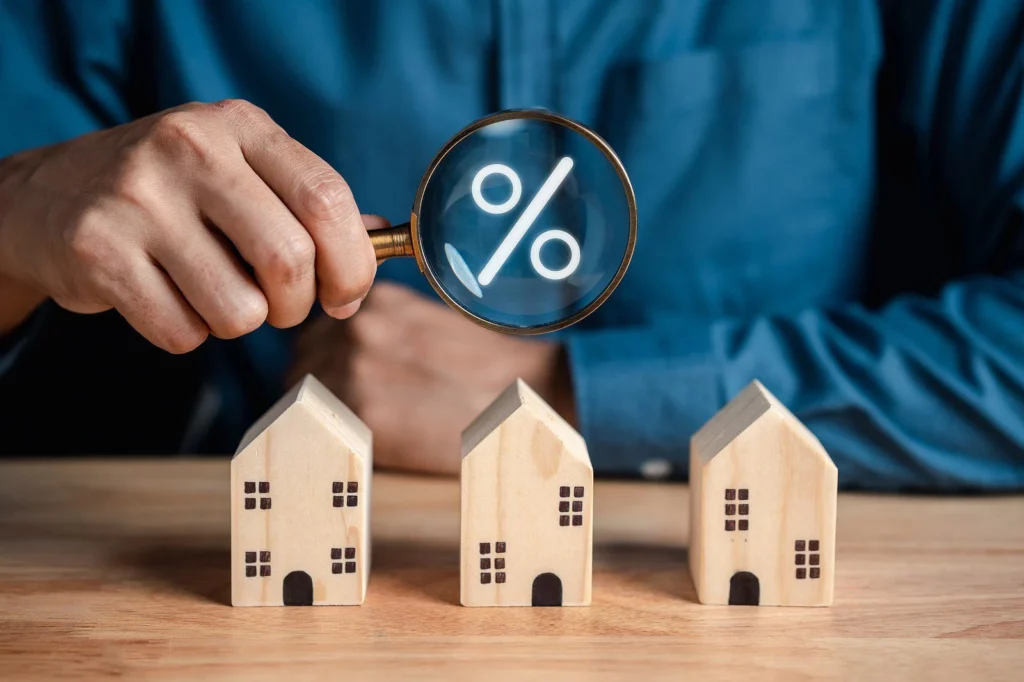Depreciation helps rental property owners recover the costs of their investment properties over time. These techniques are devised to maximize return on investment and enhance the property’s profitability. These strategies also shape your property's annual taxable income.
Thank you for reading this post, don't forget to subscribe!The depreciation technique you choose will influence your tax benefits. There are several commonly used depreciation methods that investors can consider. Understanding how they work, their benefits, and how to calculate them should be a priority for investors looking to maximize returns especially for short-term rental properties.
The Short Term Shop focusses exclusively on short-term rentals and vacation properties. Our dedicated team of agents help investors to buy, finance, sell, and streamline their short-term properties.
Today, we’ll focus on five important aspects of depreciation that new investors looking to maximze ROIs should focus on. These aspects provide nuggets of information that will help novice investors avoid the common pitfalls of applying depreciation on short term rental properties.
1. What is Depreciation?
Depreciation in real estate refers to the gradual reduction in the value of a property over time. It acknowledges the wear and tear that buildings and their components experience. This process spreads the cost of the property across its useful life.
Real estate depreciation offers tax benefits to property owners. It allows them to deduct a portion of the property's cost each year. This deduction reflects the property's age and use. It begins when the property is available for rent. It continues annually until the owner recovers the cost or sells the property. This financial tool aids in managing property investment returns and reducing taxable income.
The Internal Revenue Service sets the useful life of residential rental property at 27.5 years. For commercial property, it's 39 years. These periods guide the annual depreciation deductions.
2. Types of Depreciation for Short-Term Rentals
1. Straight-Line Depreciation
This technique divides the property's cost evenly over its useful life. For short-term and vacation rentals, it's commonly 27.5 years. For example, a $300,000 property minus $50,000 land value results in a $250,000 depreciable value. Annually, the depreciation is $9,091 ($250,000 ÷ 27.5 years).
How to calculate depreciation using Straight-Line method:
Example Scenario
- Purchase price of the rental property: $300,000
- Land value: $50,000
- Useful life of the property (for residential): 27.5 years
Calculation Steps
Determine Depreciable Value: Subtract the land value from the purchase price. Land doesn't depreciate, so it's excluded.
Depreciable Value = Purchase Price - Land Value
Depreciable Value = $300,000 - $50,000 = $250,000
Calculate Annual Depreciation: Divide the depreciable value by the property's useful life.
Annual Depreciation = Depreciable Value ÷ Useful Life
Annual Depreciation = $250,000 ÷ 27.5 years = $9,090.91
So, in this scenario, the annual straight-line depreciation for the rental property would be approximately $9,090.91. Each year, the owner can deduct this amount from their taxable income as a depreciation expense, reflecting the property's wear and tear.
2. Declining Balance Depreciation
It accelerates depreciation, offering higher deductions in early years. Using a double declining balance, the depreciation rate is twice that of the straight-line method. If a property's depreciable value is $250,000, the first year's depreciation would be higher, gradually decreasing each year.
How to calculate depreciation using Straight-Line method:
Example Scenario
- Purchase price of the rental property: $300,000
- Land value: $50,000
- Useful life of the property (for residential): 27.5 years
Calculation Steps
Determine Depreciable Value**: Subtract the land value from the purchase price.
Depreciable Value = Purchase Price - Land Value
Depreciable Value = $300,000 - $50,000 = $250,000
Calculate Straight-Line Depreciation Rate: Divide 1 by the useful life of the property.
Straight-Line Rate = 1 ÷ Useful Life
Straight-Line Rate = 1 ÷ 27.5 years ≈ 0.0364 or 3.64%
Double the Straight-Line Rate for DDB:
Double Declining Rate = 2 × Straight-Line Rate
Double Declining Rate = 2 × 3.64% ≈ 7.28%
Calculate First-Year Depreciation: Apply the double declining rate to the depreciable value.
First-Year Depreciation = Depreciable Value × Double Declining Rate
First-Year Depreciation = $250,000 × 7.28% ≈ $18,200
For subsequent years, apply the same rate (7.28%) to the remaining depreciable value (which decreases each year as you deduct depreciation). This results in a larger depreciation expense in the early years of the property's life, gradually decreasing over time.

3. Sum-of-the-Years' Digits
This method is another form of accelerated depreciation. It involves adding the digits of the property's useful life and applying a fraction to the depreciable value. The deductions are higher in the early years and decrease over time.
Example Scenario
- Purchase price of the rental property: $300,000
- Land value: $50,000
- Estimated useful life of the property: 10 years
Calculation Steps
Determine Depreciable Value**: Subtract the land value from the purchase price.
Depreciable Value = Purchase Price - Land Value
Depreciable Value = $300,000 - $50,000 = $250,000
Calculate the Sum of the Years' Digits: Add together the digits of each year in the property's useful life.
SYD = 1 + 2 + 3 + ... + 10
SYD = 55 (This is the sum of the digits from 1 to 10)
Calculate Annual Depreciation: In the first year, you use the fraction 10/55 of the depreciable value, in the second year 9/55, and so on.
First-Year Depreciation:
First-Year Depreciation = (Depreciable Value × Remaining Life) / SYD
First-Year Depreciation = ($250,000 × 10) / 55 ≈ $45,455
Second-Year Depreciation:
Second-Year Depreciation = ($250,000 × 9) / 55 ≈ $40,909
... and so on for subsequent years.
Under the SYD method, the depreciation amount is higher in the earlier years and decreases as the property ages. This method is beneficial for investors who anticipate higher expenses or lower income in the initial years of property ownership.
4. Section 179 Deduction
Section 179 Deduction allows business owners to deduct the full purchase price of qualifying property in the year it's put into service, rather than depreciating it over several years. This is particularly relevant for short-term rental property owners who buy furniture or equipment for their rental business. Here's a real-world example of how to calculate the Section 179 Deduction:
Example Scenario
A short-term rental property owner purchases new furniture and appliances for their rental property.
- Total cost of furniture and appliances: $30,000
- The property owner's taxable income for the year (before the deduction): $100,000
Calculation Steps
1. Verify Eligibility: Ensure the purchased items qualify for the Section 179 Deduction. Furniture and appliances for a rental business typically qualify.
2. Determine Total Cost of Qualifying Property: Add up the cost of all qualifying items.
Total Cost = Cost of Furniture + Cost of Appliances
Total Cost = $30,000
3. Apply the Section 179 Deduction: Deduct the total cost of the qualifying property from your taxable income.
- Taxable Income After Deduction = Taxable Income - Section 179 Deduction
- Taxable Income After Deduction = $100,000 - $30,000 = $70,000
In this scenario, the property owner can reduce their taxable income from $100,000 to $70,000 for the year by applying the Section 179 Deduction.
This immediate deduction accelerates the tax benefits, providing significant upfront savings, which is especially beneficial for those looking to offset the high initial costs of furnishing a rental property.
5. Bonus Depreciation
This method permits a significant portion of the purchase price of eligible business property to be deducted in the first year it's placed in service. For short-term rentals, this can include improvements like a new roof or HVAC system.
Example Scenario
- A short-term rental property owner makes improvements to their property.
- Cost of improvements (eligible for bonus depreciation): $50,000
- The current year's bonus depreciation rate: 100%
Calculation Steps
1. Verify Eligibility: Confirm that the property improvements are eligible for bonus depreciation. Generally, improvements like a new roof, HVAC system, or appliances qualify.
2. Determine Cost of Eligible Property: Total the cost of all eligible property improvements.
Total Cost of Eligible Improvements = $50,000
3. Apply the Bonus Depreciation Rate: Multiply the total cost by the current bonus depreciation rate.
- Bonus Depreciation = Total Cost of Eligible Improvements × Bonus Depreciation Rate
- Bonus Depreciation = $50,000 × 100% = $50,000
In this scenario, the property owner can immediately deduct the full cost of the improvements, $50,000, from their taxable income for that year.
This deduction can significantly reduce the taxable income, offering a substantial tax advantage and lessening the financial impact of property improvements in the short term.
3. The Impact of Depreciation on Rental Income Taxation
Depreciation impacts rental income taxation by reducing taxable income. It allows rental property owners to deduct a portion of the property's cost each year. This deduction reflects the property's wear and tear over its useful life.
For example, if a rental property, excluding land, is worth $200,000 and the IRS-set useful life is 27.5 years, the annual straight-line depreciation would be about $7,272. This amount can be deducted from the rental income, thereby lowering the taxable income.
The reduced taxable income translates into lower tax liabilities for property owners. Consider a scenario where a property generates $30,000 in annual rental income. Without depreciation, the owner might be taxed on the full $30,000.
However, with the $7,272 depreciation deduction, the taxable income drops to $22,728. The lower taxable income can mean significant tax savings, especially for those in higher tax brackets.
Moreover, different depreciation methods can influence the timing and amount of tax benefits. Accelerated methods like Double Declining Balance or Sum-of-the-Years' Digits offer larger deductions in the early years of property ownership. This can be particularly advantageous for investors who expect higher expenses or lower rental incomes initially. Such strategies can provide substantial upfront tax relief, enhancing cash flow in the critical early stages of the investment.
4. Two Key Strategies to Maximize Depreciation Deductions
Cost Segregation Studies
Cost segregation studies separate property components for faster depreciation. They categorize elements like furniture and fixtures, which depreciate quicker than the building structure.
For example, segregating a $20,000 HVAC system allows depreciating it over 5 years instead of 27.5 years for the entire property. This front-loads deductions, enhancing cash flow in the early years.
Regularly Updating Depreciation Schedules
Maintaining updated depreciation schedules ensures all deductions are captured. As properties undergo improvements or additions, these changes should be reflected in the depreciation schedule. For example, adding a $15,000 room to a rental property should be added to the schedule for accurate depreciation calculations.

5. Work with Real Estate Agents Experienced in Short-Term Rental Properties
Selecting the appropriate depreciation method for your rental property influences your financial outcomes as an investor. Understanding depreciation tactics available to you and aligning them with your investment duration, cash flow needs, and tax factors will help you maximize your ROI. This alignment helps in boosting your property's profitability and managing tax liabilities effectively.
Remember, real estate investing is dynamic. Your ideal depreciation strategy might shift with your investment objectives and changes in tax laws. It's important to regularly reassess your strategy and stay updated on tax regulations. This approach ensures your investment success continues.
Are you a real estate investor aiming to enhance your ROI through depreciation? Interested in investing in short-term properties for steady cash flow returns? If yes, get in touch with our expert team at The Short Term Shop.
Investor Questions about Depreciation on Rental Properties
Is the land on which my rental property stands eligible for depreciation?
No, the land under your rental property is not eligible for depreciation. Only the building and its improvements depreciate over time. The cost of land is excluded from the cost basis when calculating depreciation for rental properties.
Can improvements made to the rental property be depreciated, and if so, how?
Yes, improvements to a rental property can be depreciated. These costs are added to the property's basis and depreciated over the property's useful life. For example, adding a new roof allows you to increase the property's basis and claim additional depreciation deductions.
Are there any special considerations or forms needed when using depreciation for rental properties on my tax return?
When claiming depreciation for rental properties on your tax return, use IRS Form 4562. Ensure you report the property's cost basis accurately and choose the correct depreciation method. Consult a tax professional for guidance on rental property depreciation on tax returns.
What is rental property depreciation limit?
Rental property depreciation doesn't have a specific limit. The total amount you can depreciate is based on the property's cost basis, excluding land value. The total depreciation amount is spread over the property's recovery period.
Do you have to depreciate rental property?
Yes, if you use your rental property for business or investment purposes, you must depreciate it. Depreciation deductions account for the property's wear and tear, reducing your taxable income from the rental property.
What is rental property depreciation life?
The useful life for residential rental properties is 27.5 years under the General Depreciation System (GDS). For commercial rental properties, it's 39 years. This period determines the annual depreciation deduction for real estate investments.
What depreciation methods are acceptable under IFRS?
Under IFRS, acceptable depreciation methods include the straight-line method, declining balance method, and units of production method. The chosen method should reflect the pattern in which the asset's future economic benefits are expected to be consumed by the entity.
How do I know which depreciation method to use?
Choose a depreciation method based on your investment strategy and tax situation. The straight-line method spreads costs evenly, while methods like the declining balance offer accelerated deductions. Consult a tax professional to determine the best method for your rental property.
What is the simplest depreciation method?
The simplest depreciation method for rental properties is the straight-line method. It divides the property's depreciable base by its useful life, providing a consistent annual depreciation deduction. This method is widely used for its simplicity and uniform annual deductions.
